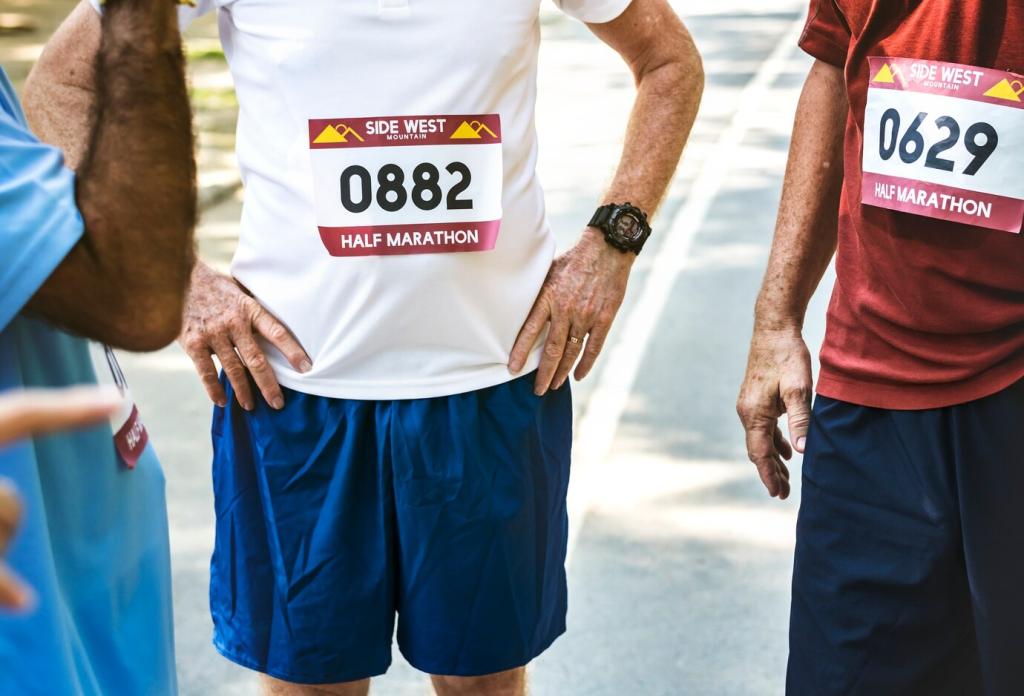
Run on Local Time: Your Guide to Conquering Jet Lag Before a Marathon
Chosen theme: Adjusting to Jet Lag for Marathon Runners. Learn science-backed tactics, real runner stories, and a step-by-step timeline so you arrive sharp, sleep well, and race the clock—literally. Share your approach and subscribe for weekly travel-to-race insights.
Flying east typically feels harder because you must advance your body clock, while flying west delays it. Most athletes can shift roughly one to two hours per day. Knowing your direction lets you target light exposure and sleep timing before your marathon.

Pre-Flight Strategy: Sleep Banking and Gradual Shifts
Add thirty to sixty minutes of sleep for three to four nights pre-flight. Keep wake time consistent to avoid oversleep inertia. Prioritize deep sleep with a cool, dark room, and anchor your recovery runs early to align with your intended race-morning wake-up.


Pre-Flight Strategy: Sleep Banking and Gradual Shifts
Shift bedtime and mealtimes by twenty to forty-five minutes per day toward destination time. For eastbound trips, move earlier; for westbound, move later. Adjust your easy runs to that new window, teaching your body when to be alert and when to wind down.
In-Flight Tactics: Light, Movement, and Smart Stimulants
Caffeine and Alcohol Timing That Helps, Not Hurts
Use caffeine strategically to stay awake in the destination’s daytime, then cut it off eight hours before your planned local bedtime. Skip alcohol; it fragments sleep and dehydrates. Herbal tea, water, and a protein-rich snack support steady energy without wrecking your reset.
Protect Your Legs: Move Every Hour
Set a standing timer to walk the aisle, flex your ankles, and do gentle calf raises. Compression socks can reduce swelling. Hydrate steadily with electrolytes. Arrive with happy calves and hamstrings, not wooden legs, so your shakeout run feels light and springy.
Light Exposure at 35,000 Feet
Light is your strongest cue. For eastbound trips, avoid bright light during what will be your new late night and seek it during your new morning. For westbound, do the opposite. Window shades and blue-light–blocking glasses help you control the cabin environment.
Arrival Protocol: Naps, Sun, and the First Shakeout
Nap Smart or Skip It
If you must nap, cap it at twenty to thirty minutes before mid-afternoon local time. Longer naps push bedtime later and prolong jet lag. Use an eye mask, keep it cool, and set two alarms. Stand up, hydrate, and find sunlight immediately afterward.
Sunlight Windows for Faster Resets
For eastbound races, chase morning sunlight and avoid bright evening light. For westbound, seek late-afternoon light and dim your mornings. Even fifteen to thirty minutes outdoors helps. Pair light with a brisk walk to amplify alertness and reinforce the new schedule.
The 20-Minute Shakeout That Calms the System
Jog easy for fifteen to twenty minutes, add a few strides, and finish with mobility. Keep intensity low to avoid spiking cortisol at bedtime. This ritual reduces stiffness, boosts mood, and tells your brain, “This is when we move here.” Share your go-to loop.

Race-Week Timeline: A Simple, Proven Plan
Shift sleep and meals by twenty to forty-five minutes daily toward destination time. Schedule easy runs in the target race-morning window. Use bright morning light and dim evenings (eastbound) or the reverse (westbound). Bank a little extra sleep without changing your wake time.
Arrive if possible by T-2. Do a relaxed run with strides at race time, finalize gear, and eat familiar foods. Keep screens dim after dinner. Avoid new supplements. Protect sleep with a cool room and white noise. Tell us your best bedtime wind-down routine.
Wake at the same time you practiced all week. Drink, eat your practiced breakfast, and get twenty minutes of bright light. Keep warmup familiar: five to ten minutes easy, drills, strides. Trust your pacing plan and remember—you trained your clock for this start.

